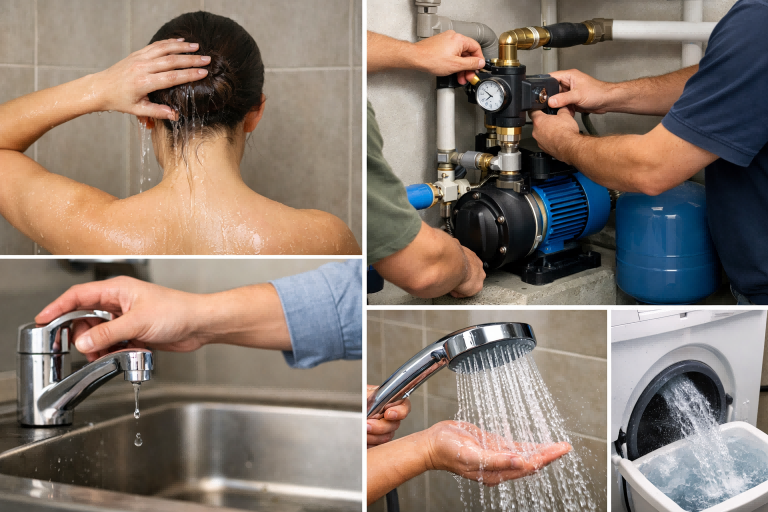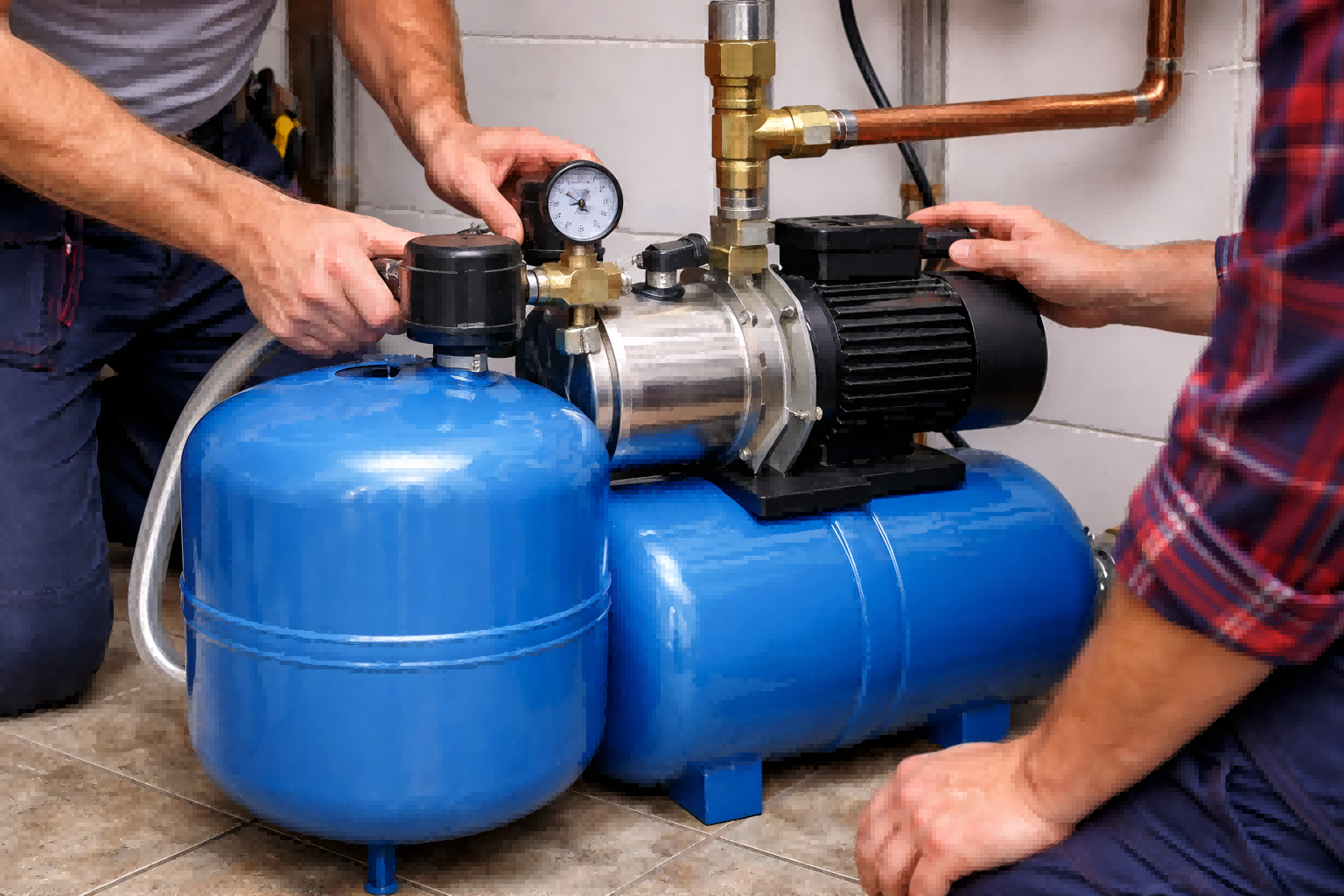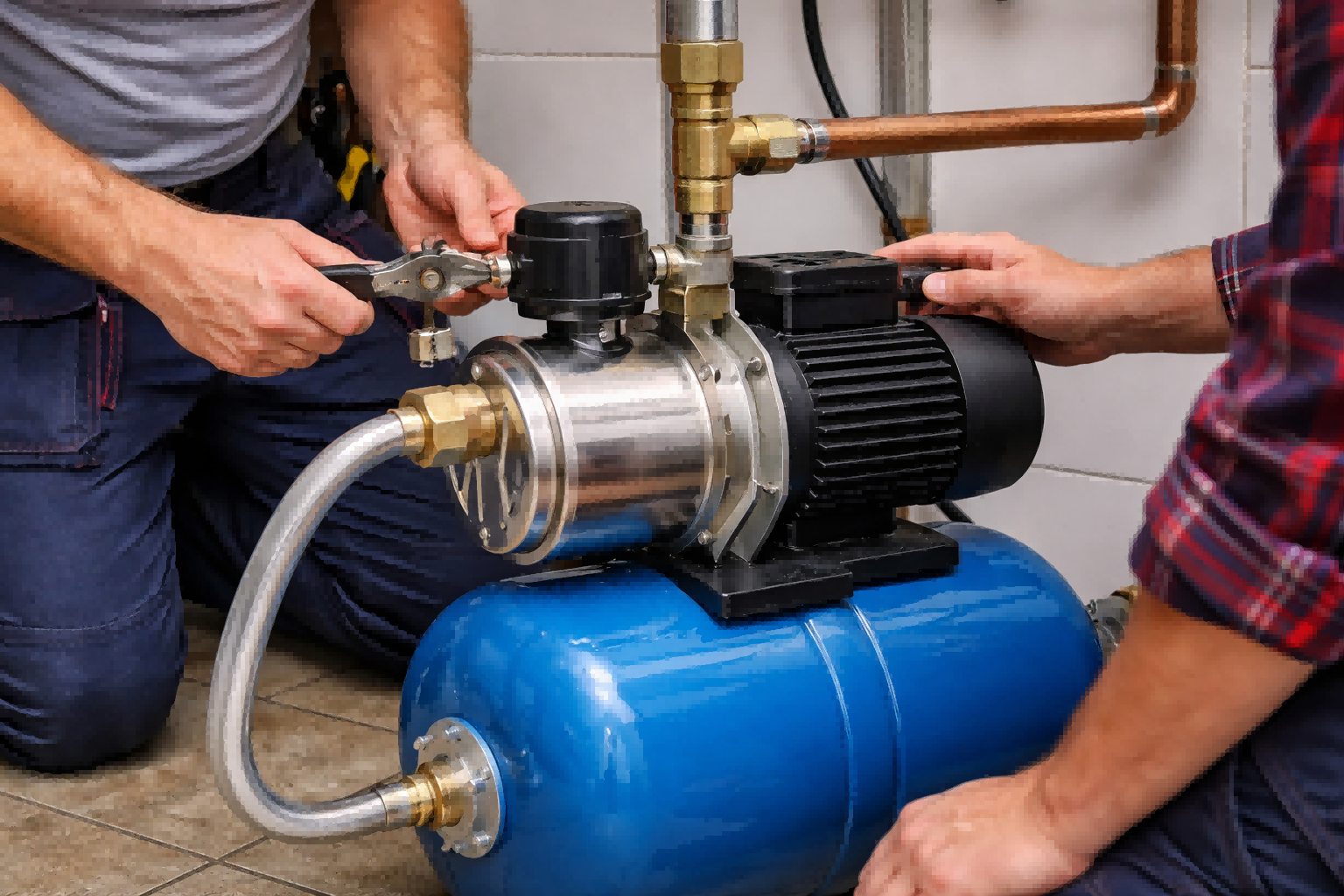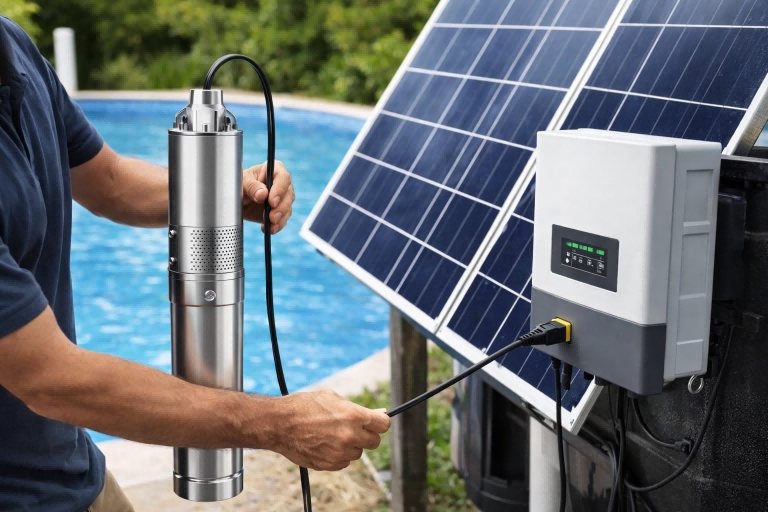Struggling with inconsistent water pressure and high energy bills from your pump system?
This creates unhappy customers and hurts your bottom line.
A modern VSD centrifugal pump solves this.
The best centrifugal pump is one that precisely matches your application's flow rate and pressure head requirements while maximizing energy efficiency. For most modern applications, a Variable Speed Drive (VSD) centrifugal pump offers the best balance of performance, control, and long-term cost savings by adjusting its speed to meet demand.
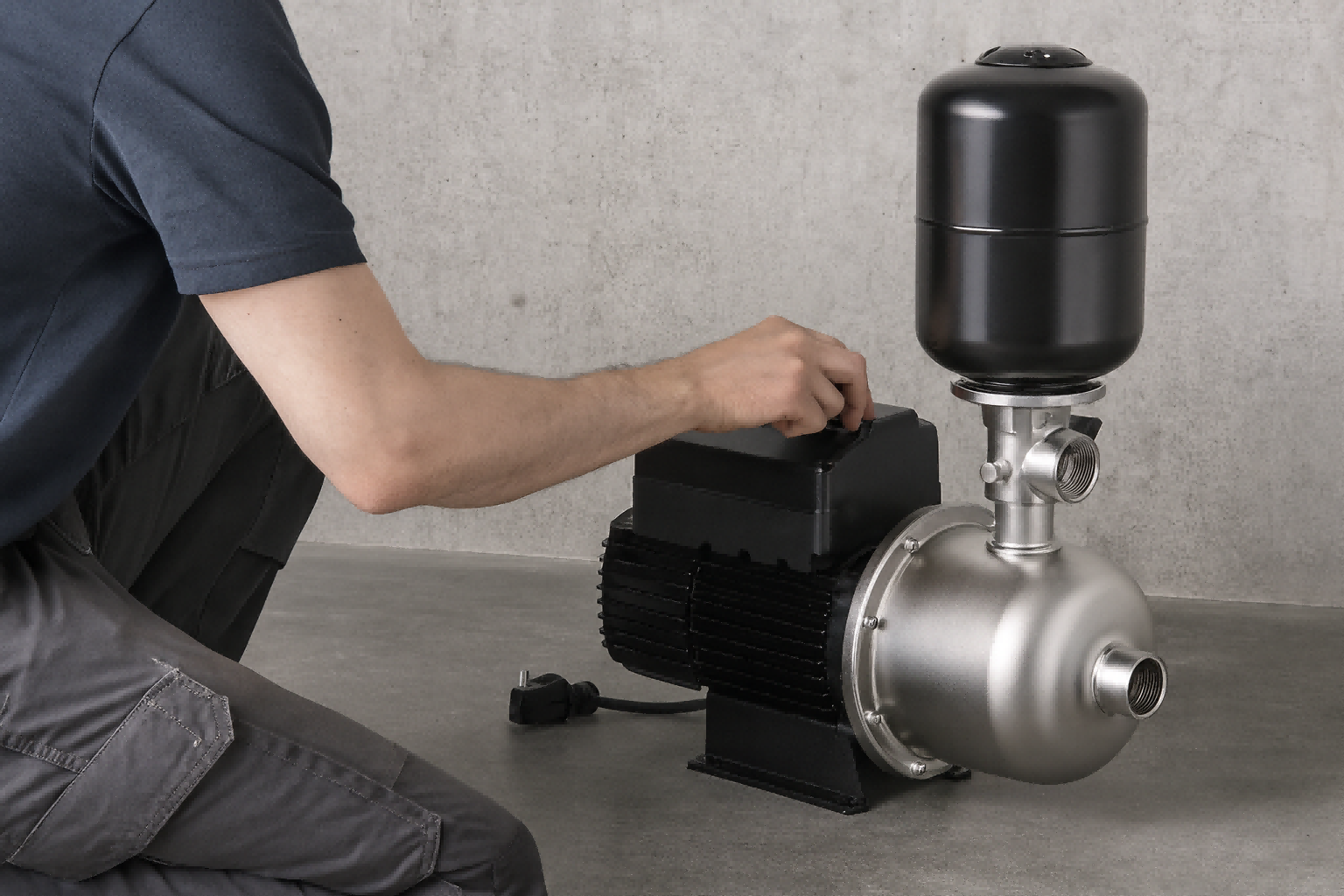
Choosing the right pump can feel overwhelming.
With so many types, specifications, and features, it's easy to make a costly mistake.
This guide simplifies the process.
We will break down everything you need to know.
You'll learn how to select the perfect centrifugal pump for your customers.
This will build your reputation for quality and expertise.
Let's dive in and find the best solution for your business.
Understanding the Basics: How Centrifugal Pumps Work
Confused by the technical jargon behind how pumps operate?
This complexity can make it hard to explain the value to your customers.
Understanding the core principles empowers you to sell confidently.
A centrifugal pump uses a rotating impeller to pull fluid into its center and then accelerate it outward into a casing. This kinetic energy is converted into pressure energy, forcing the fluid through the outlet. It's a simple, reliable mechanism for moving liquids efficiently.
To truly grasp which pump is best, we first need to look at its core components.
Understanding how these parts work together is the foundation of making an informed choice.
It's simpler than it sounds.
A centrifugal pump has three main parts that do all the work.
These are the impeller, the casing, and the motor.
Let's look at each one more closely.
The Heart of the Pump: The Impeller
The impeller is the rotating part of the pump.
It's a disk with vanes that spins at high speed.
The motor powers this rotation.
As the impeller spins, it creates a low-pressure area at its center, known as the eye.
This low pressure is what pulls fluid into the pump.
The vanes then catch the fluid and accelerate it radially outward.
This process gives the fluid velocity, which is a form of kinetic energy.
There are different types of impellers for different jobs.
- Open Impellers: These have vanes attached to a central hub with no shroud. They are good for handling fluids with suspended solids but are less efficient.
- Semi-Open Impellers: These have a back wall (shroud) that adds mechanical strength. They balance efficiency and solids-handling capability.
- Closed Impellers: These have shrouds on both the front and back of the vanes. They are the most efficient type but are best suited for clear liquids as they can clog easily.
Choosing the right impeller type is crucial for pump performance and longevity, especially depending on the water quality in a specific application.
The Pressure Converter: The Casing (Volute)
The casing, often called the volute, is the stationary part that encloses the impeller.
It has a very specific, snail-like shape.
Its cross-sectional area gradually increases towards the discharge outlet.
This design is intentional and very important.
As the high-velocity fluid leaves the impeller, it enters the wider area of the casing.
The increasing area forces the fluid to slow down.
According to Bernoulli's principle, as the fluid's velocity decreases, its pressure must increase.
The volute is expertly designed to manage this energy conversion.
It efficiently transforms the kinetic energy from the impeller into useful pressure energy.
This pressure is what pushes the fluid out of the pump and through the pipelines.
A well-designed casing minimizes energy loss and maximizes output pressure, which is a key indicator of a quality pump.
The Power Source: The Motor
The motor is the engine of the centrifugal pump.
It provides the rotational power needed to spin the impeller.
Without the motor, nothing happens.
The motor's power, speed, and efficiency directly impact the pump's overall performance.
Traditionally, motors ran at a single, fixed speed.
This meant the pump was always running at full power, even when demand for water was low.
This wasted a significant amount of electricity.
Today, advanced pumps use modern motor technology.
Permanent magnet synchronous motors (PMSM) are a major innovation.
They are more efficient and compact than traditional induction motors.
When paired with a Variable Speed Drive (VSD), they become highly intelligent.
The VSD allows the motor to adjust its speed in real-time.
It matches the pump's output to the exact demand.
This results in huge energy savings—often up to 50% or more.
It also reduces wear and tear on the pump and motor, extending their lifespan.
For a distributor, offering pumps with this technology provides a clear competitive advantage.
A Guide to Centrifugal Pump Types
Overwhelmed by the sheer number of centrifugal pump variations available?
This wide selection can make it difficult to stock the right inventory for your market.
Focusing on the main categories simplifies your purchasing decisions.
Centrifugal pumps are mainly categorized by the number of impellers (single-stage vs. multi-stage) and their core design (e.g., end-suction, submersible, horizontal). The best type depends entirely on the required pressure, flow rate, and the specific installation environment.
Not all centrifugal pumps are created equal.
They are designed in different ways to suit different tasks.
Understanding these categories is essential for matching the right product to your customer's needs.
This knowledge helps you guide your clients to the most effective and efficient solution.
We can classify them based on several key design characteristics.
Let's explore the most common classifications you'll encounter.
Classification by Number of Stages
One of the most fundamental ways to categorize centrifugal pumps is by the number of impellers they contain.
This directly relates to the amount of pressure the pump can generate.
Single-Stage Pumps
A single-stage pump has only one impeller.
It is a simple, robust, and cost-effective design.
These pumps are ideal for applications requiring high flow rates at relatively low pressure.
They are commonly used in residential water supply, drainage, and general industrial fluid transfer.
Their simple construction means easier maintenance and fewer parts that can fail.
For many standard jobs, a high-quality single-stage pump is the perfect solution.
Multi-Stage Pumps
A multi-stage pump contains two or more impellers within a single casing.
The impellers are connected in series on a single shaft.
The fluid is discharged from the first impeller and immediately enters the eye of the second impeller.
With each stage, the pressure is progressively boosted.
This design allows multi-stage pumps to generate much higher pressures than single-stage pumps.
They are essential for applications like high-rise building water supply, reverse osmosis, and boiler feed systems.
While more complex, their ability to achieve high head makes them indispensable for specific, demanding applications.
Classification by Shaft Orientation
The physical layout of the pump, specifically its shaft orientation, is another key differentiator.
This often determines how the pump is installed and where it can be used.
Horizontal Centrifugal Pumps
In these pumps, the shaft is in a horizontal position.
This is a very common and popular design.
Horizontal pumps are typically easy to install and access for maintenance.
They are often end-suction pumps, where the suction nozzle is on the end and the discharge is on top.
This configuration is suitable for a huge range of applications, from small domestic booster pumps to large industrial process pumps.
Their accessibility makes routine checks and repairs straightforward for technicians.
Vertical Centrifugal Pumps
Vertical pumps have their shaft in a vertical orientation.
This design offers a significant advantage: a smaller footprint.
They take up less floor space, which is critical in crowded mechanical rooms or compact installations.
Some vertical pumps, like inline pumps, can be mounted directly into a pipeline, similar to a valve.
Others are designed to be submerged, like deep well or sump pumps.
This versatility makes them excellent problem-solvers for space-constrained projects.
Choosing Based on Function
Ultimately, the best way to classify a pump is by its intended job. A distributor needs a portfolio that covers the most common customer needs.
| Pump Category | Typical Application | Key Feature | Ideal Customer |
|---|---|---|---|
| Intelligent VSD Booster Pumps | Residential homes, commercial buildings | Maintains constant pressure, saves energy | Property managers, developers looking for modern, efficient solutions. |
| Self-Priming Pumps | Draining pools, agricultural irrigation | Can handle air and prime itself | A perfect choice for applications where the pump is located above the water source. |
| Multi-Stage Pumps (Horizontal/Vertical) | High-rise buildings, reverse osmosis | Generates very high pressure (head) | Engineers designing systems for tall buildings or industrial processes. |
| Submersible/Deep Well Pumps | Extracting water from wells, boreholes | Motor is sealed and submerged | Rural property owners, agricultural businesses relying on groundwater. |
This table helps connect specific pump types to real-world applications.
As a distributor, understanding these connections allows you to ask the right questions and recommend the perfect product.
Key Factors for Choosing the Right Centrifugal Pump
Choosing the wrong pump leads to poor performance and premature failure.
This can damage your reputation and lead to costly warranty claims.
A systematic selection process ensures you get it right every time.
To choose the right centrifugal pump, you must analyze four critical factors: the required flow rate (Q), the total dynamic head (H), the properties of the fluid being pumped, and the Net Positive Suction Head Available (NPSHa) at the pump's inlet.
Selecting the optimal pump isn't a matter of guesswork.
It's a technical process that requires careful consideration of the system's demands.
Getting these details right is the difference between a system that works flawlessly for years and one that constantly causes problems.
For a B2B partner like you, guiding your clients through this process demonstrates immense value.
Let's break down the essential factors you must evaluate for every single project.
Factor 1: Required Flow Rate (Q)
The flow rate is the volume of liquid the pump needs to move in a given amount of time.
It's usually measured in gallons per minute (GPM), cubic meters per hour (m³/h), or liters per second (L/s).
This is often the first question to ask.
What is the system's demand for water?
Is it for a single-family home or a large commercial building?
Underestimating the flow rate will result in the system not getting enough water.
Overestimating it means you'll be using an oversized pump.
An oversized pump wastes energy and can operate outside its ideal efficiency range, leading to damage.
Determining the peak demand is crucial for sizing the pump correctly.
Factor 2: Total Dynamic Head (H)
Head is the most misunderstood parameter, but it's critically important.
It's not just the vertical height the water needs to be lifted.
Total Dynamic Head (TDH) is the total pressure the pump must generate to overcome the system's resistance.
It is measured in feet, meters, or pounds per square inch (PSI).
TDH is composed of two main components:
- Static Head: This is the vertical distance in height from the source water level to the destination point. It's the physical lift the pump must perform.
- Friction Head: As water moves through pipes, fittings, and valves, it encounters friction. This friction creates resistance, which the pump must overcome. Longer pipes, smaller pipe diameters, and more bends all increase friction head.
You must calculate both static and friction head to find the TDH.
A pump that can't meet the TDH won't deliver water to the destination.
A pump that generates far too much head will waste energy and stress the system components.
Factor 3: The Rise of Smart Technology - VSD
For decades, pumps ran at a single speed.
This was inefficient because water demand is almost never constant.
A fixed-speed pump sized for peak demand wastes a huge amount of energy during off-peak times.
The solution is Variable Speed Drive (VSD) technology.
A VSD, also known as a variable frequency drive (VFD), is an intelligent controller for the pump's motor.
It works with pressure sensors to monitor the system's needs in real time.
When demand is low, the VSD slows the motor down.
When demand is high, it speeds the motor up.
The result is a perfectly stable, constant water pressure throughout the building, regardless of how many taps are open.
This offers several huge benefits for the end-user:
- Massive Energy Savings: By not running at full speed all the time, VSD pumps can cut electricity consumption by up to 50%. This is a powerful selling point.
- Enhanced Comfort: No more pressure drops when someone flushes a toilet or turns on a shower. The pressure remains constant.
- Longer Equipment Life: The "soft start" and reduced operating speeds put less mechanical stress on the pump, motor, and pipes, extending their lifespan.
- Quiet Operation: Slower speeds mean significantly less noise, which is a major benefit in residential settings.
Modern, high-efficiency pumps, especially those using permanent magnet motors, are designed around VSD technology.
For a distributor, offering intelligent VSD pumps positions your business as a provider of modern, high-value, and cost-effective solutions.
It addresses your customers' needs for both performance and price competitiveness over the life of the product.
Factor 4: Quality, Durability, and Certifications
A pump is a long-term investment.
Your customers need to know the products you supply are built to last.
This is where manufacturing quality and rigorous testing become paramount.
A reputable manufacturer invests heavily in quality control.
Look for a structured system that covers the entire production process.
This includes:
- IQC (Incoming Quality Control): Checking the quality of all raw materials and components before they enter the production line.
- LQC (Line Quality Control): Monitoring and testing at various stages of the assembly process.
- PQC (Process Quality Control): Ensuring that the manufacturing processes themselves are stable and consistent.
- OQA (Outgoing Quality Assurance): Final, thorough testing of the finished product before it is packaged and shipped.
Beyond internal processes, look for evidence of extreme environmental testing.
For example, pumps that undergo 144+ hours of salt spray testing are proven to resist corrosion.
Similarly, 1000+ hours of UV resistance testing ensure that components exposed to sunlight won't degrade prematurely.
Finally, international certifications like CE, IEC, and RoHS are non-negotiable.
They confirm that the product meets stringent safety, performance, and environmental standards recognized globally.
As a distributor, partnering with a manufacturer that prioritizes these quality indicators protects your brand and ensures customer satisfaction.
It gives you the confidence to stand behind the products you sell.
Installation and Maintenance Tips for Longevity
A great pump can fail if it's installed incorrectly.
Improper installation leads to callbacks, unhappy customers, and wasted profits.
Following best practices ensures reliability and protects your reputation.
Proper centrifugal pump installation requires a solid, level foundation, correct pipe alignment to avoid stress on the pump nozzles, and ensuring all electrical connections are safe and secure. Regular maintenance should include checking for leaks, monitoring vibrations, and cleaning intake filters.
The sale doesn't end when the pump leaves your warehouse.
Ensuring your customers know how to properly install and maintain the equipment is a critical part of providing a complete solution.
This helps prevent common problems and guarantees the pump delivers the long-term performance it was designed for.
Providing this guidance adds value to your service and builds lasting customer relationships.
Let's review the essential best practices for both installation and ongoing maintenance.
Best Practices for Pump Installation
A successful installation starts with a solid foundation.
This prevents vibration and ensures the pump and motor stay aligned.
The Foundation
The pump must be mounted on a rigid, flat, and level base.
A concrete pad is ideal for larger pumps.
The foundation should be substantial enough to absorb any vibration and prevent movement.
Ensure the base is completely level before bolting the pump down.
Use shims to make fine adjustments if necessary.
An unlevel base can distort the pump casing and lead to catastrophic failure.
Piping and Alignment
Pipe strain is a silent killer of pumps.
All piping connected to the pump's suction and discharge nozzles must be independently supported.
The pipes should line up perfectly with the pump flanges without needing to be forced into place.
Forcing pipes to align puts immense stress on the pump casing.
This can cause misalignment, bearing failure, and leaks.
Always install flexible connectors and expansion joints where appropriate, especially on long pipe runs.
Electrical Connections
Electrical work should always be performed by a qualified electrician.
Ensure the motor's voltage and phase match the power supply.
Install appropriate motor protection, such as overload relays and circuit breakers.
Verify the motor's direction of rotation before coupling it to the pump.
Running a centrifugal pump backward can cause severe damage.
For VSD pumps, follow the manufacturer's specific wiring diagrams for the drive and any external sensors.
Routine Maintenance Checklist
Regular maintenance is key to a long and trouble-free service life.
A simple, repeatable checklist helps ensure nothing is missed.
Here is a basic schedule to share with your customers.
| Frequency | Maintenance Task | Purpose |
|---|---|---|
| Weekly | Visual Inspection: Check for any leaks from pump seals, gaskets, or pipe fittings. | Early detection of leaks prevents water damage and fluid loss. |
| Listen for strange noises: Pay attention to any new grinding, rattling, or high-pitched sounds. | Unusual noises can be the first sign of bearing wear or cavitation. | |
| Monthly | Check Motor Temperature: Use an infrared thermometer to check bearing and motor housing temperatures. | Overheating is a clear sign of a problem, such as overload or poor ventilation. |
| Monitor Vibration: Feel the pump for any increase in vibration levels. | Increased vibration often points to misalignment or imbalance issues. | |
| Quarterly | Clean Strainers/Filters: Inspect and clean any filters on the suction side of the pump. | A clogged strainer restricts flow and can cause the pump to starve (cavitate). |
| Verify VSD Parameters: For smart pumps, check the drive's fault log and ensure settings are correct. | Ensures the intelligent system is operating as designed. | |
| Annually | Check Alignment: For coupled pumps, verify the alignment between the pump and motor shafts. | Misalignment is a leading cause of premature bearing and seal failure. |
| Professional Service: Consider a full service by a qualified technician. | A professional can perform more in-depth checks, like electrical testing and seal replacement. |
Providing your customers with a simple guide like this empowers them to care for their investment.
It reduces the likelihood of preventable failures.
This builds trust and positions you as a knowledgeable and supportive partner, not just a supplier.
It reinforces the quality of the products you distribute and supports the long-term success of your clients.
Conclusion
Choosing the best centrifugal pump means matching the right technology to the specific job.
Modern VSD pumps offer unmatched efficiency, control, and long-term value for a wide range of applications.
FAQs
What is the main difference between centrifugal and positive displacement pumps?
Centrifugal pumps use an impeller to generate flow, with output varying by pressure. Positive displacement pumps trap and move a fixed volume of fluid, delivering constant flow regardless of pressure.
Can a centrifugal pump run dry?
No, running a centrifugal pump without liquid can quickly damage the mechanical seal and other internal components due to a lack of lubrication and cooling, leading to rapid failure.
What is pump cavitation and how can I avoid it?
Cavitation is the formation and collapse of vapor bubbles inside a pump, causing noise, vibration, and damage. Avoid it by ensuring sufficient Net Positive Suction Head (NPSH) is available.
How do I select the right size pump?
To size a pump correctly, you must calculate the required flow rate and the total dynamic head of your system. Use these values to find a pump that operates at its Best Efficiency Point (BEP).
What are the benefits of a Variable Speed Drive (VSD) pump?
VSD pumps offer significant energy savings, constant pressure control, reduced mechanical stress for a longer lifespan, and quieter operation compared to fixed-speed pumps.
Why is the pump curve important?
A pump curve is a graph showing the pump's performance. It helps you verify that the pump can deliver your required flow rate and head while operating within its recommended efficiency range.
How often should a centrifugal pump be serviced?
Basic checks like looking for leaks should be done weekly. More thorough maintenance, like cleaning filters, should be done monthly or quarterly, with a professional service recommended annually.


